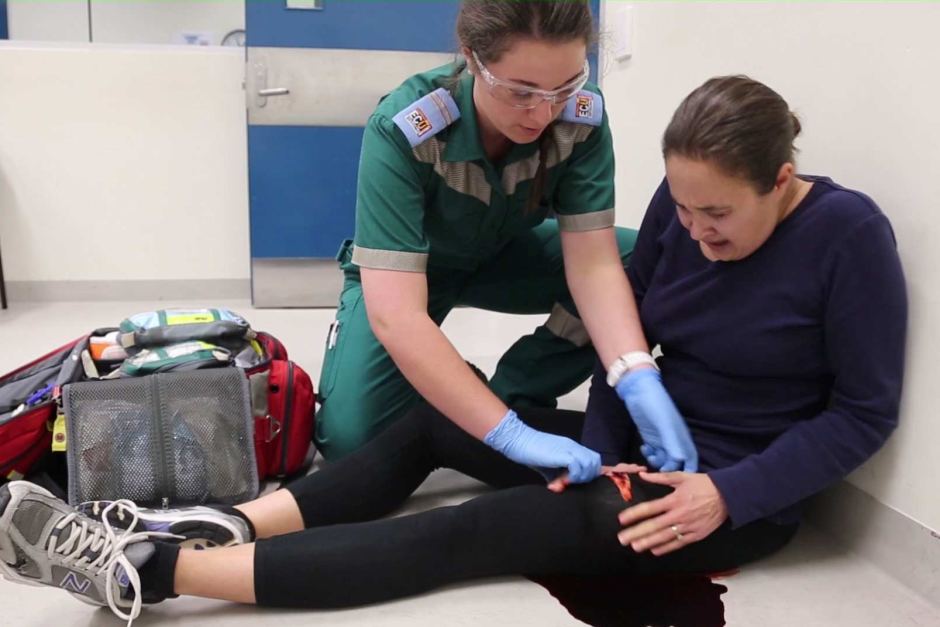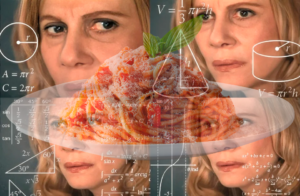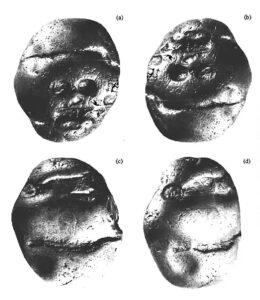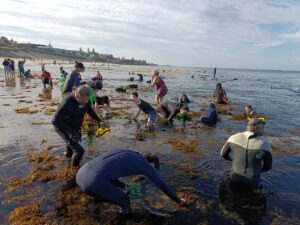That’s the gruesome scene ECU student paramedics were confronted with last year.
Luckily, it was a simulation to test their speed and skill treating patients with realistic injuries.
ECU lecturer Dr Brennen Mills used Hollywood-style makeup, called moulage, to create fake injuries students will likely face in the future.
FAKE BLOOD INCREASES SPEED AND ERRORS
Students work faster but make more mistakes treating patients with gory injuries.
“When you think about it, it’s probably not all that surprising,” Brennen says.
“A lot of their exposure is in classroom-based scenarios where they are working on each other.”
“What we’ve done is throw them in the deep end and ask them to do something that’s a lot more reflective of what happens in the real world.”
GORE CHALLENGES STUDENTS
Twenty-five second-year paramedicine students treated patients with realistic stab wounds while 25 students role-played imaginary stab wounds.
Brennen says seeing “blood spurting into the air” made students leap into action faster.
“They dove right in because they could see what they needed to do and just did it,” he says.
But while they applied pressure 30 seconds quicker, the moulage group’s test scores were lower.
“The moulage added an additional layer of difficulty and was enough to tip them over the edge, so their performance was suboptimal,” Brennan says.
“They are able to go through the motions nice and slow and do well, but when we put them under pressure with the added moulage, their performance suffers.”
CLASSROOM MISTAKES CRUCIAL TO LEARNING
This testing shows students should experience simulations before becoming professional paramedics, Brennen says.
“If their first exposure to a scenario of this kind was out on the road, our data would suggest they would perform sub-optimally.”
“That’s when I get a bit worried.”
“They need to reproduce behaviour that replicates how they’re going to need to act in real life.”
A POSITIVE LEARNING EXPERIENCE
Brennen hopes universities embrace the benefits of moulage.
“The [students] enthusiasm and support for the moulage was overwhelming,” Brennan says.
“They said it was definitely challenging, but they…felt like they learnt and took away so much more.”
ECU has incorporated more moulage into final year paramedicine units since the study.
These simulations are part of a study submitted to Simulation in Healthcare for publication.









